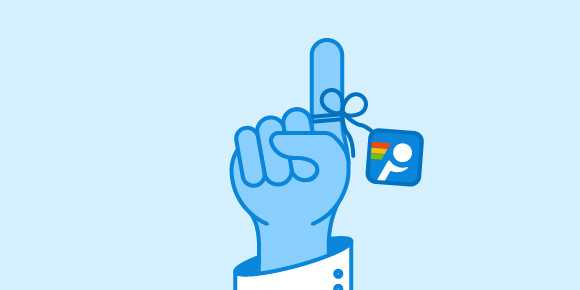
A Detailed Guide on How to Troubleshoot Customer Service
What are the most important aspects of successfully expanding a business? An excellent product or service is imperative, and having a strong marketing strategy to promote it is very important. To keep customers loyal and satisfied, you'll also need a strong customer support plan in place.
As the move to a world where digital is everywhere, the majority of customer experiences will be delivered through online channels, where interpreting reactions will be more difficult.
Whether you're on the front line interacting with customers or backstage working on the enabling technology, identifying issues or fixing what"s broken, it is imperative that great customer service considers the digital experiences of customers; this should be key for every business around the world.
Meanwhile, if you work in customer service, you're expected to be great at resolving customer problems. But while you may be adept at resolving customer problems, can you also troubleshoot them? Those are two entirely different concepts.
In this article, we'll go over what customer service troubleshooting entails, why good customer service troubleshooting is so important, and how to troubleshoot customer service.
What is troubleshooting
Simply put, troubleshooting is the process of determining the root cause of a problem, and implementing the best possible solution to resolve it.
Effective customer support troubleshooting involves more than just quick fixes or providing detailed instructions. It's about being polite, on time, and patient, as well as sticking by their side the entire time. Essentially, you must say what consumers want to hear while not creating false expectations.
Applying a temporary fix may appear to be a quick and easy way to resolve a customer issue, but chances are you'll have to face the consequences of that hasty fix sooner or later - whether in the form of money or time (or both!).
That's not what you're looking for, is it?
That's precisely why effective troubleshooting is important.
Here are some of the main reasons why good customer service troubleshooting is so important for business success:
Increase customer retention
When you go out of your way to quickly resolve a particularly complex customer issue - one that they have been unable to resolve on their own - they are more likely to return, and the more loyal customers you have, the more your company can grow to its full potential.
For example, if your customer service team has a streamlined procedure that makes network troubleshooting solutions quick and easy, you're more likely to retain customers, and build a loyal customer base that values your no-hassle service policy.
It saves you and your customer time.
As a customer service representative, your to-do list is constantly growing, and working accurately is the only way to stay on top of everything. That's where your excellent troubleshooting abilities come in handy.
Good troubleshooting involves not only identifying the best possible solution to a customer's problem but also identifying it quickly.
You can speed up issue resolution by evaluating similar issues customers have faced in the past, having extensive knowledge of the product, and regularly documenting the troubleshooting process for unique customer issues. This will save both you, and your customers a lot of time.
Become the authority
When your company serves as a one-stop shop for all of your customers' needs, you will be regarded as an industry expert. Imagine you run an inventory management consulting firm, and one of your customers is comparing Fifo vs Lifo, but not sure which one to use.
It is your responsibility to help resolve this issue for them effectively, and at the right time.
Effective customer support troubleshooting lays the groundwork for your company to become the industry's only trusted source.
How to troubleshoot customer service
Start with an apology rather than argue
It's natural for us to defend ourselves when we are insulted. But arguing or fighting with customers is a "red flag" that leads to an even bigger clash.
In most cases, angry customers are irritated by something that isn't even your fault. However, this won't prevent them from blaming you for their problems. Pointing it out to them directly will cause them to lose faith in your brand.
The best way to solve the problem is to apologize first and then ask for more information to investigate the issue further.
It's also a good idea to hold daily stand-up meetings with agents to allow them to communicate, and air any issues they may be having, to get the job done properly. Because it doesn't matter who's to blame if you're the one who has to fix it, and reduce any potential negative consequences.
Working well as part of a team
Regardless of how skilled a problem solver you are, collaborating with your team on various customer issues is an important troubleshooting practice.
Why? Because your support team will include people with a wide range of experience, skills, and perspectives. This will assist you in developing a comprehensive customer service problem-solving strategy.
Make it a point to bounce ideas off one another frequently, hold regular meetings about unique customer issues, and work together to resolve them.
If you're considering hiring a remote workforce or are doing so for the first time, keeping everyone connected to the apps, and services they use can be difficult. Knowing best practices for keeping your remote team connected is critical if you want to save yourself and your colleagues a lot of trouble later on.
Aim to prevent future problems
Preventing future problems requires not only ensuring that existing issues are resolved; it also entails proactively identifying and addressing issues so that customers do not have to deal with them in the first place.
For example, since software developers are familiar with their products, they can be assigned to deal with software issues, enhancing the customer experience. Even the same team member can complete, and test code changes quickly.
Don't be afraid to conduct more formal tests with real testers or to use a trustworthy user testing app. It's worth it if it means preventing customer problems before they happen!
It is also worth noting that, as technology evolves at a rapid pace, customers change and evolve in response. The large impact software and technology have on our human behaviors is huge; therefore businesses need to ensure that their software development aligns with business practices.
Communicating with empathy and patience
The ability to patiently listen to customers' needs while showing genuine empathy for their problems is the most important quality of a trouble-shooter.
You must pay attention to even the most minor cues and details that customers share with you. At the same time, avoid overwhelming them with unnecessary questions. Remember that not all of your customers will be tech-savvy, so keep your communication as simple as possible.
Very likely, you would also communicate to your boss the problems that you or your clients are experiencing. Knowing your boss's communication style will help you communicate effectively with them.
For example, imagine you've been experiencing network troubles that have been affecting your conversations with customers; knowing how to prove the network troubles to your boss is crucial if you want to potentially solve customers' problems, and become a valuable employee.
Respond to the complaint as soon as possible
When you receive a complaint, you have about five minutes to respond. If you miss this, it will take a lot more effort to calm down an angry customer. Every minute you remain silent can irritate them further.
Your communications setup will need to meet a variety of needs throughout the tenure of your business. Some teams will be office-based, and will require an intuitive desk phone that is simple to use.
Another team may be on the road and require a mobile app that is fully integrated with the main system, while a third team may work from home, and in the office, requiring the ability to seamlessly switch between the two.
Reliable enterprise phone systems can meet all your needs and more, providing customers with access, without forcing them to seek phone systems can meet all of these needs and assistance elsewhere.
Understand your product, and ensure your team & customers help themselves
Following the above tips is a great way to resolve most complex support issues, but understanding how different parts of the product link to each other can often help isolate issues.
Even with a good model to follow, if your support team lacks a solid foundation of product, and domain knowledge, they will struggle to effectively troubleshoot.
Always aim to examine the agent's recent work to determine where you have a product knowledge issue rather than a lack of troubleshooting skill.
Can the agent handle basic onboarding questions and how-tos? Do their customer conversations veer off course or necessitate the intervention of other agents? Identify resources for them to use when they get stuck on product questions, if they are still learning.
In some cases, your agents or remote team may be operating across multiple time zones, which can be challenging for businesses. Learn how to deal with this in Best Practices for Working With Teams in Different Time Zones.
Also, encourage your customers to perform basic troubleshooting checks on their own. Direct them to the information in your knowledge base that is pertinent to their problem. Instead of sending them a direct link to the article, summarize the resolution process in an email, and include the link to the article at the end.
It will be appreciated by both your team, and your customers.
Jenna Bunnell - Senior Manager, Content Marketing, Dialpad

Jenna Bunnell is the Senior Manager for Content Marketing at Dialpad, an AI-incorporated cloud based phone system that provides valuable call details for business owners and sales representatives. She is driven and passionate about communicating a brand's design sensibility and visualizing how content can be presented in creative and comprehensive ways. She has also written articles for sites such as Agility PR Solutions and MacSecurity. Check out her LinkedIn profile.
Do you support other people?When remote workers have connection trouble PingPlotter Cloud helps you help them.





